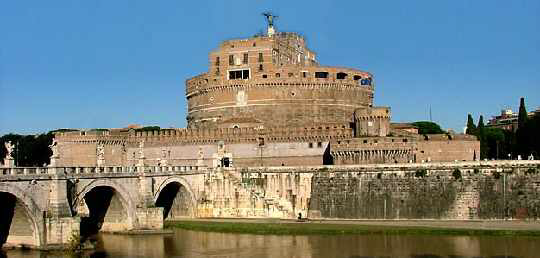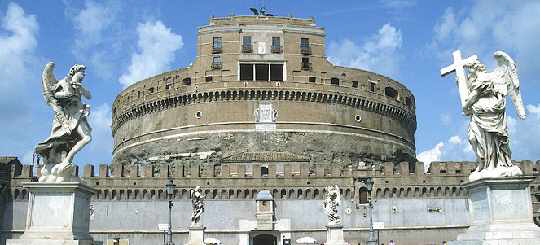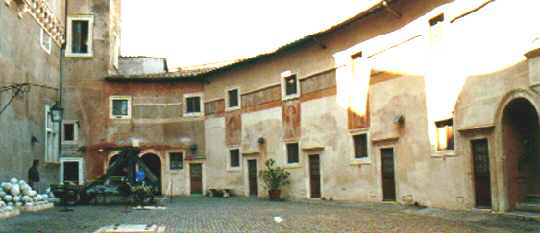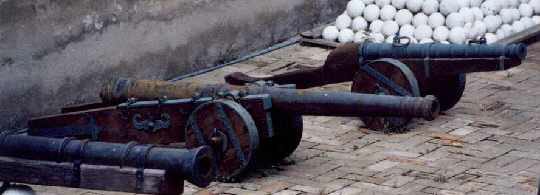
Tour of Rome
Castel Sant Angelo
Castel Sant Angelo is located in the heart of the city of Rome, on the banks of the river Tiber. It is close to the Vatican, and is served by the same bus services, including the 40 express from Stazione Terminiserve. The nearest Metro station is Lepanto, on Line A. Opening hours are 9am until 7pm, Tuesday to Sunday.
The building was originally built as a mausoleum for the emperor Hadrian, and was completed after his death by his successor, Antoninus Pius. Originally the building consisted of a large square base with a cylindrical shaped top, on which stood a huge statue of the emperor Hadrian. During the mid sixth century A.D. the building was converted into a fortress and became the military key to Rome for the next 1,000 years.


The name, Castel Sant Angelo dates back to when Pope Gregory the Great, during a procession to plead for the end of a plague, saw an angel standing on the top of the castle sheathing its sword. This was interpreted as being a heavenly sign that the plague was about to end. Henceforth, it became known as Castel Sant Angelo. A small chapel was built on top the castle at the spot where the angel was supposed to have appeared. The event is commemorated by a magnificent eighteenth century statue, created by the Flemish artist Werschaffeltof, of the angel sheathing its sword.

During the middle ages, the castle became home to many different noble families up until 1377 when it came under full papal control. The Castel Sant Angelo is linked to the Vatican by an underground passage, known as the passetto del borgo. The passage was used by the Popes in times of trouble to escape from the Vatican to the safety of the castle.

The Castle is divided into five floors, on the first is the start of a long winding ramp of Roman construction. On the second floor can be found store rooms that once contained oil and wheat, and cells from the time when the castle was used as a prison. The third floor, or military floor, consists of two large courtyards. On the forth floor can be found the magnificent papal rooms, here are frescos by artists such as Giulio Romano and Perin del Vaga. On the top floor, there is a huge terrace with magnificent views over the city. Lovers of opera will know that it is from here that Puccini’s Tosca leapt to her death.